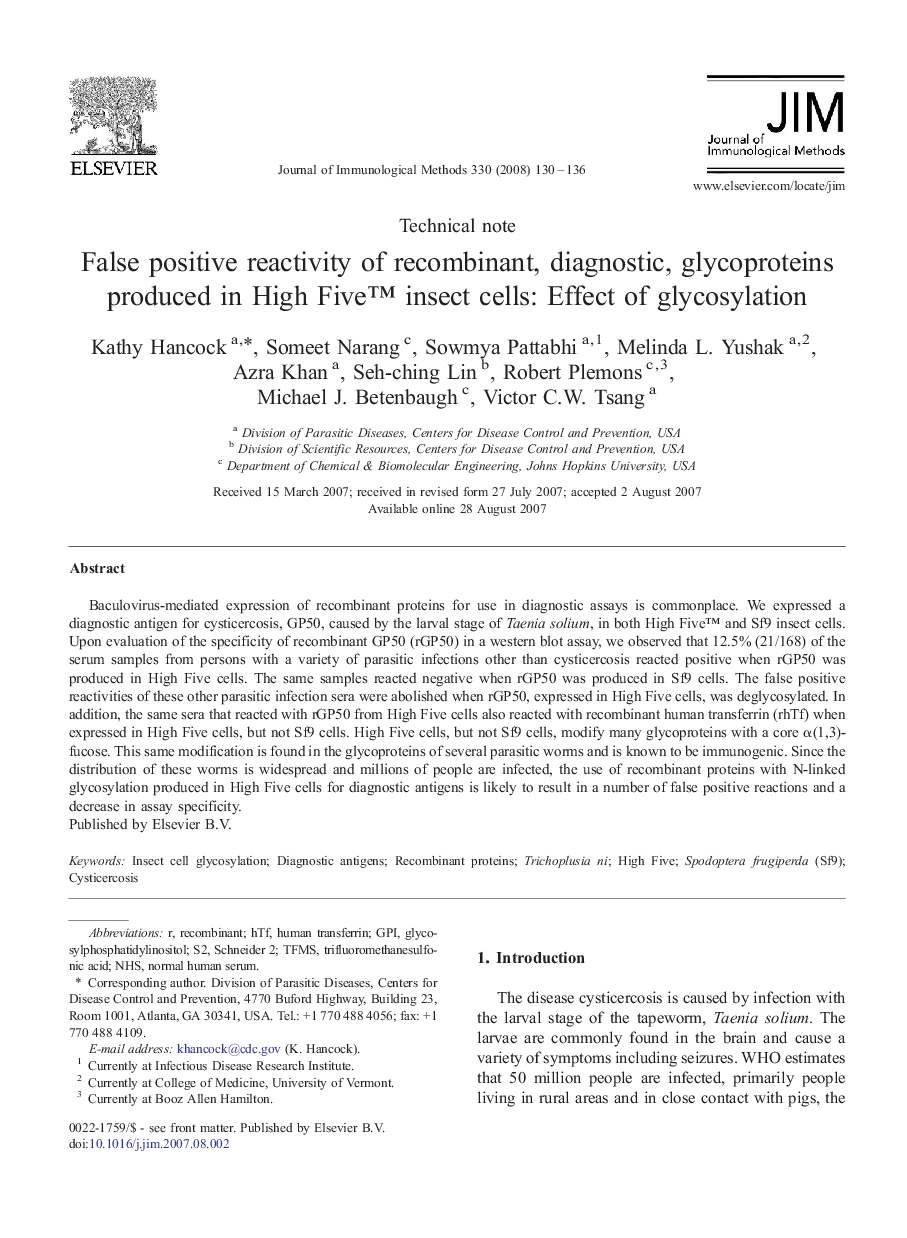| Article ID | Journal | Published Year | Pages | File Type |
|---|---|---|---|---|
| 2088936 | Journal of Immunological Methods | 2008 | 7 Pages |
Baculovirus-mediated expression of recombinant proteins for use in diagnostic assays is commonplace. We expressed a diagnostic antigen for cysticercosis, GP50, caused by the larval stage of Taenia solium, in both High Five™ and Sf9 insect cells. Upon evaluation of the specificity of recombinant GP50 (rGP50) in a western blot assay, we observed that 12.5% (21/168) of the serum samples from persons with a variety of parasitic infections other than cysticercosis reacted positive when rGP50 was produced in High Five cells. The same samples reacted negative when rGP50 was produced in Sf9 cells. The false positive reactivities of these other parasitic infection sera were abolished when rGP50, expressed in High Five cells, was deglycosylated. In addition, the same sera that reacted with rGP50 from High Five cells also reacted with recombinant human transferrin (rhTf) when expressed in High Five cells, but not Sf9 cells. High Five cells, but not Sf9 cells, modify many glycoproteins with a core α(1,3)-fucose. This same modification is found in the glycoproteins of several parasitic worms and is known to be immunogenic. Since the distribution of these worms is widespread and millions of people are infected, the use of recombinant proteins with N-linked glycosylation produced in High Five cells for diagnostic antigens is likely to result in a number of false positive reactions and a decrease in assay specificity.
